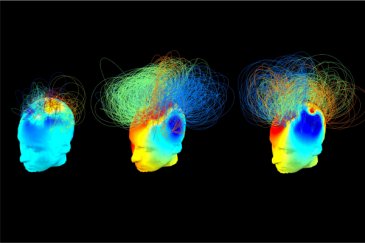The new research could help doctors to quickly identify patients who are aware despite appearing unresponsive and unable to communicate.
Researchers from University of Cambridge in the UK have identified hidden networks in vegetative patients that could support consciousness, even when a patient appears to be unresponsive.
There's been a lot of interest lately into how much patients in vegetative states, such as comas, are aware of their surroundings. Recently, research involving functional magnetic resonance imaging (fMRI) scanning has shown that even patients who are unable to respond or move are able to carry out mental tasks, such as imagining playing a game of tennis.
Now the team of scientists have used high-density electroencephalographs (EEG) and mathematics known as "graph theory" to study the networks of activity in the brains of 32 patients who have been diagnosed as being in a vegetative state.
They also compared these EEG scans to the scans of health adults. Their fundings reveal that the interconnected networks that support awareness in the healthy brain are usually - but, importantly, not always - impaired in patients in a vegetative state.
Amazingly, the research showed that some of these "vegetative patients" have well-preseved consciousness networks that look similar to those of healthy adults - and these are the same patients who had been able to imagine playing tennis in the previous study.
"Understanding how consciousness arises from the interactions between networks of brain regions is an elusive but fascinating scientific question," said Srivas Chennu from the Department of Clinical Neurosciences at the University of Cambridge in a press release.
"But for patients diagnosed as vegetative and minimally conscious, and their families, this is far more than just an academic question – it takes on a very real significance. Our research could improve clinical assessment and help identify patients who might be covertly aware despite being uncommunicative," he added.
This is a huge breakthrough, as it will help scientists develop a relatively simple way of identifying "vegetative" patients who might still be aware.
And unlike the tennis test, which was quite a difficult task that required expensive and often unavailable fMRI scanners, this new technique uses simple EEG technology and could be administered at a patient's bedside.
Of course, the tennis test provides stronger evidence that the patients can follow commands using their thoughts. And in the future, the researchers believe that by combining these tests they could accurately predict whether a vegetative person is aware.
"Although there are limitations to how predictive our test would be used in isolation, combined with other tests it could help in the clinical assessment of patients. If a patient's 'awareness' networks are intact, then we know that they are likely to be aware of what is going on around them," said Tristan Bekinschtein, also from the University of Cambridge, in the release.
"But unfortunately, they also suggest that vegetative patients with severely impaired networks at rest are unlikely to show any signs of consciousness,"
The results are published in PLOS Computational Biology.
Source: EurekAlert
